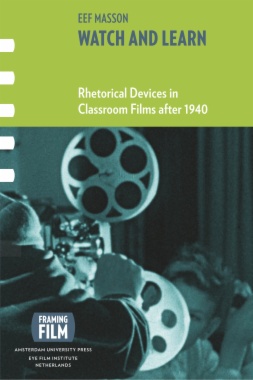Instructional films of the twentieth century, used to teach, train, inform, or advertise to their viewers, can provide historians and scholars of cinema studies with a wealth of information about both their creators and intended consumers. Watch and Learn focuses on the rhetoric used in these films, particularly the way in which the films used in the classroom relate to their audience, casting them both as film viewers and students. Providing the outline for a new methodology for interpreting and understanding the scripts and visuals of this peculiar brand of cinema, this book approaches the study of instructional films from a novel and illuminating perspective.
- Table of Contents
- Acknowledgements
- Introduction
- Part One
- 1. Film for Education: Debates, Idea(l)s and Practices
- Introduction
- 1.1 Film as an Educational Tool
- 1.2 The Classroom Film: Institutionalisation
- Conclusions
- 2. Classroom Film Use and the Pedagogical Dispositif
- Introduction
- 2.1 The Reception and Use of Classroom Films
- 2.2 Classroom Films and the Pedagogical Dispositif
- Conclusions
- Part Two
- 3. Rhetoric: Text and Frame
- Introduction
- 3.1 Rhetoric: Conceptual Exploration
- 3.2 Framing Rhetoric
- 3.3 Textual Rhetoric
- Conclusions
- 4. Textual Rhetoric I: Motivational Devices
- Introduction
- 4.1 Textual Motivation: Foci and Strategies
- 4.2 Strategies of Motivation: Blurred Boundaries
- 4.3 Textual Motivation Reconsidered: Didactic Matter and Periphrasis
- Conclusions
- 5. Textual Rhetoric II: Referencing the Pedagogical Dispositif
- Introduction
- 5.1 References to the Dispositif: Discursive Variety
- 5.2 A Historical Perspective
- 5.3 Referencing the Dispositif and Issues of Authority
- Conclusions
- Conclusions: Towards a Conception of the Dispositif Notion as a Comparative Tool
- Notes
- List of Illustrations
- NOF Films Online
- Filmography
- Bibliography
- Index

